Initially this guide displays common species likely to be flitting right now. Use the selectors below to view by color, include rare species, or search by name.
Over 100 species of butterflies and skippers have been identified in the Los Alamos area, and over 150 in the Jemez Mountains. This guide mainly includes the common species, but even some of these are difficult to tell apart. For example, we have 4 species of fritillaries with very subtle differences.
In addition, there are an equally large number of moths in the area. However, most moths are active at night they are not as readily observed. Therefore, this guide primarily focuses on the moths that are more obvious due to their size or the fact that they are active during the day. The easiest way to tell a moth from a butterfly is to look at the antennae. The moth has feathery or saw-edged antennae, while the butterfly has antennae that look like a long shaft with a bulb at the end. In addition, moths and butterflies tend to hold their wings differently. Moths tend to fold their wings down to form a tent over their abdomen, hiding it from view. In contrast, butterflies usually hold their wings vertically up over their backs.
Both butterflies and moths develop through a process of complete metamorphosis with four stages: egg, larva, pupa, and adult. The young are very different from the adults and often eat different types of food. Pictures of the caterpillar larva for many of the species in this guide are included.
Get current information by joining PEEC Butterfly Watchers and taking a look at PEEC’s Butterfly, Skipper, and Moth set on Flickr. Additional information can be found in Butterflies through Binoculars: The West and Kaufman Field Guide to Butterflies of North America. Close-focusing binoculars are the best equipment for watching adult butterflies and moths.
Butterfly and Moth References
BugGuide
Butterflies and Moths of North America
Cary, S., 2009 Butterfly Landscapes of New Mexico. New Mexico Magazine
eNature
Glassberg, J., 2001 Butterflies Through Binoculars: The West. Oxford University Press
How to Build a Butterfly Garden
Subject Area Experts (all guides)
Steve Cary (butterflies)
Beth Cortright (insects)
Terry Foxx (invasive plants)
Leslie Hansen (mammals)
Richard Hansen (fish, mammals)
Dorothy Hoard (butterflies, trees)
Chick Keller (flowers, herbarium)
Shari Kelley (geology)
Kirt Kempter (geology)
Garth Tietjen (reptiles)
David Yeamans (birds)
Web Development and Content Management
Pat Bacha
Jennifer Macke
Graham Mark
Akkana Peck
Contact
Please contact us for local nature questions and sightings. We welcome comments, corrections, and additions to our guides.
For more information about local nature, please visit our Nature Blog or subscribe to PEEC This Week.
Make Selection
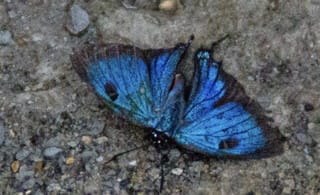 Photo: reiver 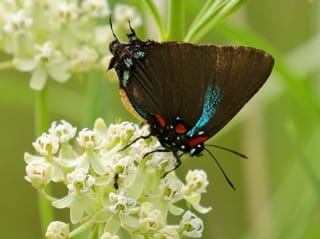 Photo: Bob Walker 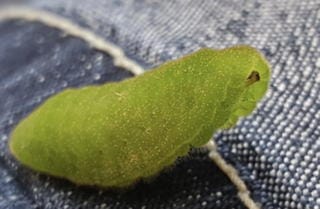 Photo: Arica Shields | Great Purple Hairstreak, Great Blue Hairstreak(Atlides halesus)Family: Lycaenidae (Gossamer-winged Butterflies) Size: 1.3 - 2 in (3 - 5 cm) Color: blue, brown Flits: Mar 01 - Dec 01 Status: native; common Food source: Nectar from flowers including goldenrod and wild plum Host: mistletoe Habitat: mixed woods infested with mistletoe Typical location: White Rock Canyon The Great Purple Hairstreak is a Neotropical species with a range from the southern parts of the US down through the Isthmus of Panama. Its primary coloration is bright blue above and brown with white, yellow, and red spots below. It has an orange abdomen. Larvae feed on the parasitic mistletoe but pupate under the bark of the parasitized tree. Info Photos |
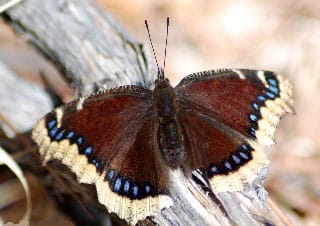 Photo: Sally King 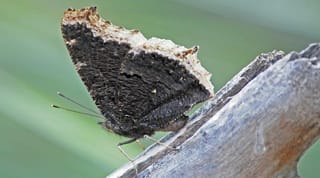 Photo: Jerry Oldnettel 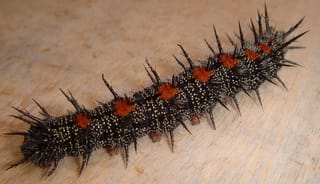 Photo: Wthrower | Mourning Cloak, Camberwell Beauty(Nymphalis antiopa)Family: Nymphalidae (Brush-footed Butterflies) Size: 2.9 - 2.4 in (7 - 6 cm) Color: black, brown Flits: Feb 01 - Nov 30 Status: native; common Food source: tree sap, rotting sap, and occasionally flower nectar Host: willows, cottonwoods, Siberian elm Habitat: woods, openings, parks, and suburbs, especially near water Velvety black with bright yellow band on upper hindwings. Info Photos |
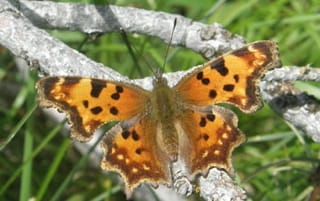 Photo: Chick Keller 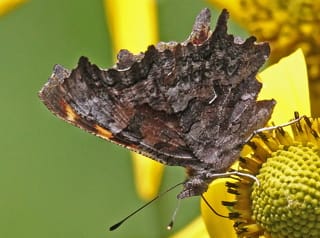 Photo: Jerry Oldenettel | Green Comma, Green Anglewing, Faunus Anglewing(Polygonia faunus)Family: Nymphalidae (Brush-footed Butterflies) Size: 1.8 - 2.5 in (4 - 6 cm) Color: orange Flits: Feb 01 - Dec 15 Status: native; common Food source: flower nectar, dung, carrion Host: willows, currants, alders Habitat: forests, mountain streamsides, canyons Wide dark bands and mid-wing spots on hindwings. Often seen on sunny days in winter. Info Photos |
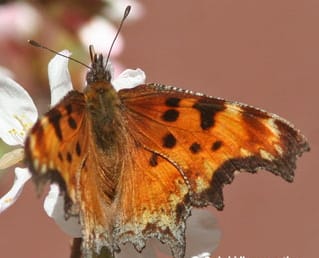 Photo: Selvi Viswanathan 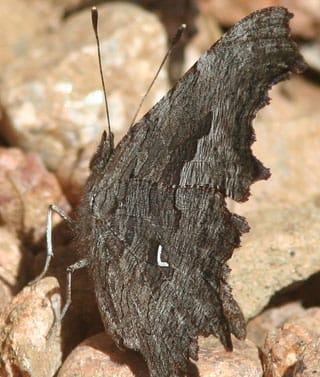 Photo: Selvi Viswanathan 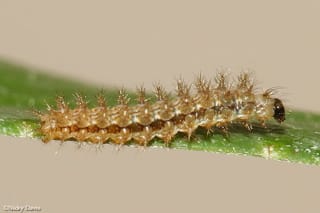 Photo: Nicky Davis | Hoary Comma(Polygonia gracilis)Family: Nymphalidae (Brush-footed Butterflies) Size: 1.4 - 1.6 in (3 - 4 cm) Color: orange Flits: Feb 01 - Dec 15 Status: native; common Food source: sap and nectar from flowers of sweet everlasting among others Host: currants, gooseberries Habitat: from foothills to tree line, woodland streamsides, brushlands Light band lacking a mid-wing spot on hindwings. Often seen on sunny days in winter. Info Photos |
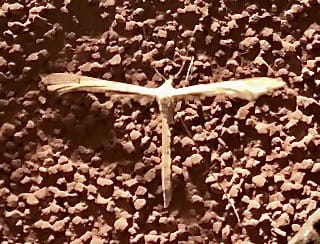 Photo: Chick Keller 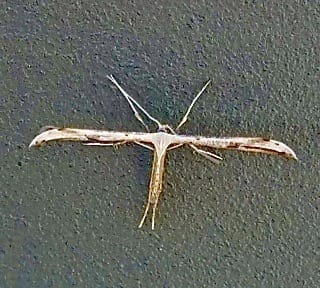 Photo: Siobhan Niklasson 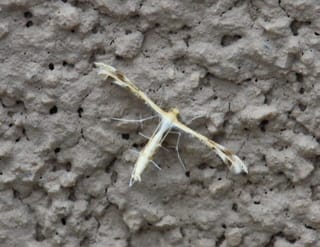 Photo: Joel DuBois | Plume Moth, Pterophorid Moth(numerous species in several genera)Family: Pterophoridae (Plume Moths) Size: 0.5 - 1.6 in (1 - 4 cm) Color: brown Flits: Mar 01 - Nov 30 Status: native; uncommon Food source: nectar and pollen Host: large variety of plants including many from the sunflower family Habitat: on flowers during the day; at light sources during dark Plume Moths tend to have muted colors but be very distinctive. They have thin, long wings which are held at a 90-degree angle from the body, long thin abdomen, and extremely long legs. When resting, the wings are usually held in a tight roll but can be spread in such a way as to show off feathery plumes giving the Pterophoridaefamily its common name. These moths are weak and fluttery in flight. There are over 150 different named species of Plume Moth in the US. Many of these are fairly similar making it very hard to distinguish from one another. Info Photos |
